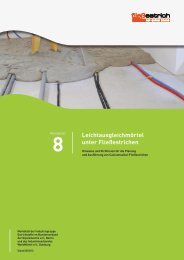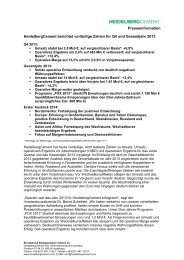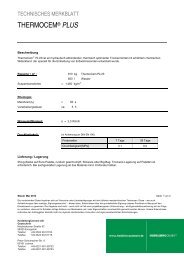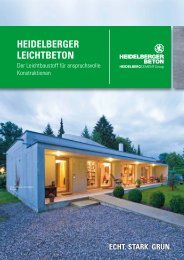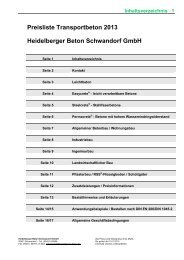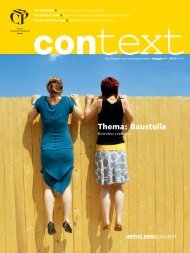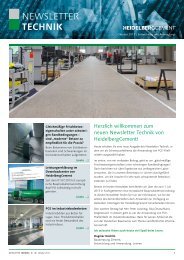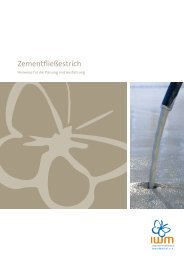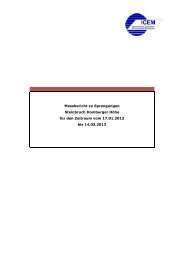TPCC Annual Report 2008.indd - HeidelbergCement
TPCC Annual Report 2008.indd - HeidelbergCement
TPCC Annual Report 2008.indd - HeidelbergCement
Create successful ePaper yourself
Turn your PDF publications into a flip-book with our unique Google optimized e-Paper software.
Revenue recognition<br />
Tanzania Portland Cement Company Ltd, <strong>Annual</strong> <strong>Report</strong> 2008<br />
Revenue is recognised to the extent that it is probable that the economic benefits will flow to the Company and the rev-<br />
enue can be reliably measured. The following specific recognition criteria must also be met before revenue is recognised:<br />
Sale of goods: Revenue is recognised when significant risks and rewards of ownership of goods have passed to the<br />
buyer.<br />
Rental income: Rental income arising from operating leases on investment properties is accounted for on a straight-line<br />
basis over the lease terms.<br />
Cash and cash equivalents<br />
Cash and bank balances in the balance sheet comprise cash at banks and in hand and short-term deposits with an origi-<br />
nal maturity of three months or less. For the purpose of the cash flow statement, cash and cash equivalents consist of<br />
cash and cash equivalents as defined above, net of outstanding bank overdrafts.<br />
Dividend distribution<br />
Dividend distribution to the shareholders is charged to equity and recognized as a liability in the Company’s financial<br />
statements in the period in which they are declared, and after being approved by the shareholders at the <strong>Annual</strong> Gen-<br />
eral Meeting.<br />
Property, plant and equipment<br />
Property, plant and equipment is stated at cost, excluding the costs of day-to-day servicing, less accumulated deprecia-<br />
tion and accumulated impairment in value. Such cost includes the cost of any replacement parts in accordance with<br />
the related recognition criteria. Depreciation is calculated on a straight-line basis over the useful life of the assets. The<br />
annual rates of depreciation which have been consistently applied are:<br />
Description Rate (%)<br />
Buildings and roads 4.0<br />
Factory plant and machinery 5.0 – 10.0<br />
Quarry plant and machinery 25.0<br />
Furniture, equipment and fixture 12.5<br />
Motor vehicles 25.0<br />
Computer hardware 33.3<br />
The carrying values of property, plant and equipment are reviewed for impairment when events or changes in circum-<br />
stances indicate that the carrying value may not be recoverable. An item of property, plant and equipment is derecog-<br />
nised upon disposal or when no future economic benefits are expected from its use or disposal. Any gain or loss arising<br />
on derecognition of the asset (calculated as the difference between the net disposal proceeds and the carrying amount<br />
of the asset) is included in the income statement in the year the asset is derecognised. The residual values, useful lives<br />
and methods of depreciating property, plant and equipment are reviewed, and adjusted if appropriate, at each financial<br />
year end. When each major inspection is performed, its cost is recognised in the carrying amount of property, plant and<br />
equipment as a replacement if the recognition criteria are satisfied.<br />
35





